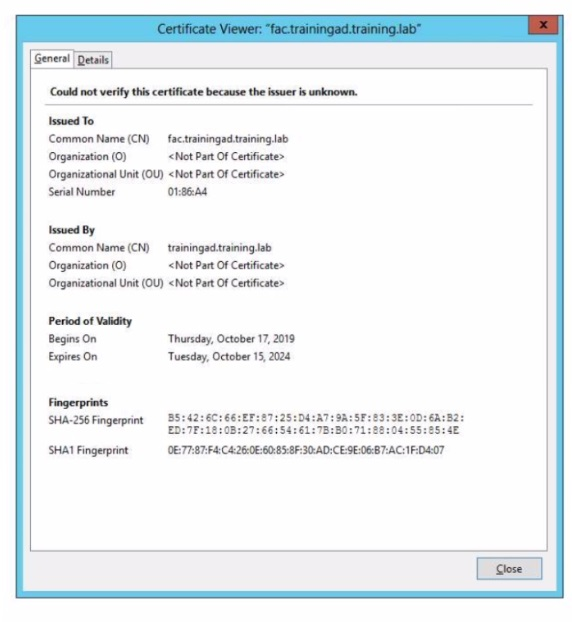Fortinet NSE7_LED-7.0 Exam Questions
- Fortinet Certified Solution Specialist Certifications
- Fortinet FCSS Fortinet Certified Solution Specialist Network Security Certifications
- Topic 1: Authentication: For network security professionals and system administrators, this section covers advanced authentication and authorization scenarios. Candidates will learn to configure and troubleshoot complex user authentication systems using RADIUS and LDAP. The section delves into implementing two-factor authentication with digital certificates, enhancing security protocols. Additionally, it covers the implementation and troubleshooting of RADIUS and syslog single sign-on solutions, providing a comprehensive understanding of modern authentication mechanisms in enterprise environments.
- Topic 2: FortiSwitch: For network engineers and IT administrators, this section focuses on the management and configuration of FortiSwitch devices. Candidates will learn to provision and manage FortiSwitch using FortiManager over FortiLink, providing centralized control of network infrastructure. The section covers securing wired networks through machine authentication, MAC Authentication Bypass (MAB), and Network Access Control (NAC) policies. It also includes implementing Zero Touch Provisioning (ZTP) solutions and automatic quarantine of wired clients using Indicators of Compromise (IoC) triggers. Configuring VLANs, ports, and trunks on FortiSwitch, as well as monitoring and troubleshooting FortiLink management issues between FortiSwitch and FortiGate, are key components of this comprehensive module.
- Topic 3: Wireless: For wireless network specialists and IT professionals, this section encompasses the deployment and management of wireless networks using Fortinet solutions. Candidates will learn to provision, deploy, and manage FortiAP devices using FortiManager over FortiLink. The section covers the implementation of complex wireless networks with dynamic VLAN assignments and IoT segmentation, addressing modern network architecture needs. It also focuses on providing secure access to guest users and implementing overall wireless network security. Candidates will gain skills in monitoring and analyzing wireless clients and traffic using Wireless Manager, as well as automatically quarantining wireless clients using IoC triggers, ensuring a secure and efficient wireless environment.
Free Fortinet NSE7_LED-7.0 Exam Actual Questions
Note: Premium Questions for NSE7_LED-7.0 were last updated On Oct. 12, 2024 (see below)
Refer to the exhibits

The exhibits show the wireless network (VAP) SSID profiles defined on FortiManager and an AP profile assigned to a group of APs that are supported by FortiGate
None of the APs are broadcasting the SSlDs defined by the AP profile
Which changes do you need to make to enable the SSIDs to broadcast?
Which two statements about the guest portal on FortiAuthenticator are true? (Choose two.)
Refer to the exhibit.

Examine the FortiManager information shown in the exhibit
Which two statements about the FortiManager status are true'' (Choose two)
According to the FortiManager Administration Guide, ''Central management mode allows you to manage all FortiSwitch devices from a single interface on the FortiManager device.'' Therefore, option C is true because the exhibit shows that the FortiSwitch manager is enabled and the FortiSwitch device is managed by the FortiManager device. Option D is also true because the exhibit shows that the FortiSwitch device status is offline, which means that it is not reachable by the FortiManager device, but it is authorized, which means that it has been added to the FortiManager device. Option A is false because per-device management mode allows you to manage each FortiSwitch device individually from its own web-based manager or CLI, which is not the case in the exhibit. Option B is false because the FortiSwitch device is authorized, as explained above.
Refer to the exhibit.

Wireless guest users are unable to authenticate because they are getting a certificate error while loading the captive portal login page. This URL string is the HTTPS POST URL guest wireless users see when attempting to access the network using the web browser

Which two settings are the likely causes of the issue? (Choose two.)
According to the exhibit, the wireless guest users are getting a certificate error while loading the captive portal login page. This means that the browser cannot verify the identity of the server that is hosting the login page. Therefore, option A is true because the external server FQDN is incorrect, which means that it does not match the common name or subject alternative name of the server certificate. Option B is also true because the wireless user's browser is missing a CA certificate, which means that it does not have the root or intermediate certificate that issued the server certificate. Option C is false because the FortiGate authentication interface address is using HTTPS, which is a secure protocol that encrypts the communication between the browser and the server. Option D is false because the user address is not in DDNS form, which is not related to the certificate error.
Refer to the exhibit.

Examine the FortiManager information shown in the exhibit
Which two statements about the FortiManager status are true'' (Choose two)
According to the FortiManager Administration Guide, ''Central management mode allows you to manage all FortiSwitch devices from a single interface on the FortiManager device.'' Therefore, option C is true because the exhibit shows that the FortiSwitch manager is enabled and the FortiSwitch device is managed by the FortiManager device. Option D is also true because the exhibit shows that the FortiSwitch device status is offline, which means that it is not reachable by the FortiManager device, but it is authorized, which means that it has been added to the FortiManager device. Option A is false because per-device management mode allows you to manage each FortiSwitch device individually from its own web-based manager or CLI, which is not the case in the exhibit. Option B is false because the FortiSwitch device is authorized, as explained above.
- Select Question Types you want
- Set your Desired Pass Percentage
- Allocate Time (Hours : Minutes)
- Create Multiple Practice tests with Limited Questions
- Customer Support
Lisbeth
3 days agoCamellia
6 days agoMiesha
15 days agoNoble
19 days agoNobuko
21 days agoMatt
1 months agoEleonora
1 months agoChau
1 months agoCandida
3 months agoArleen
3 months agoClay
4 months agoRueben
4 months agoCatarina
4 months agoChi
5 months ago